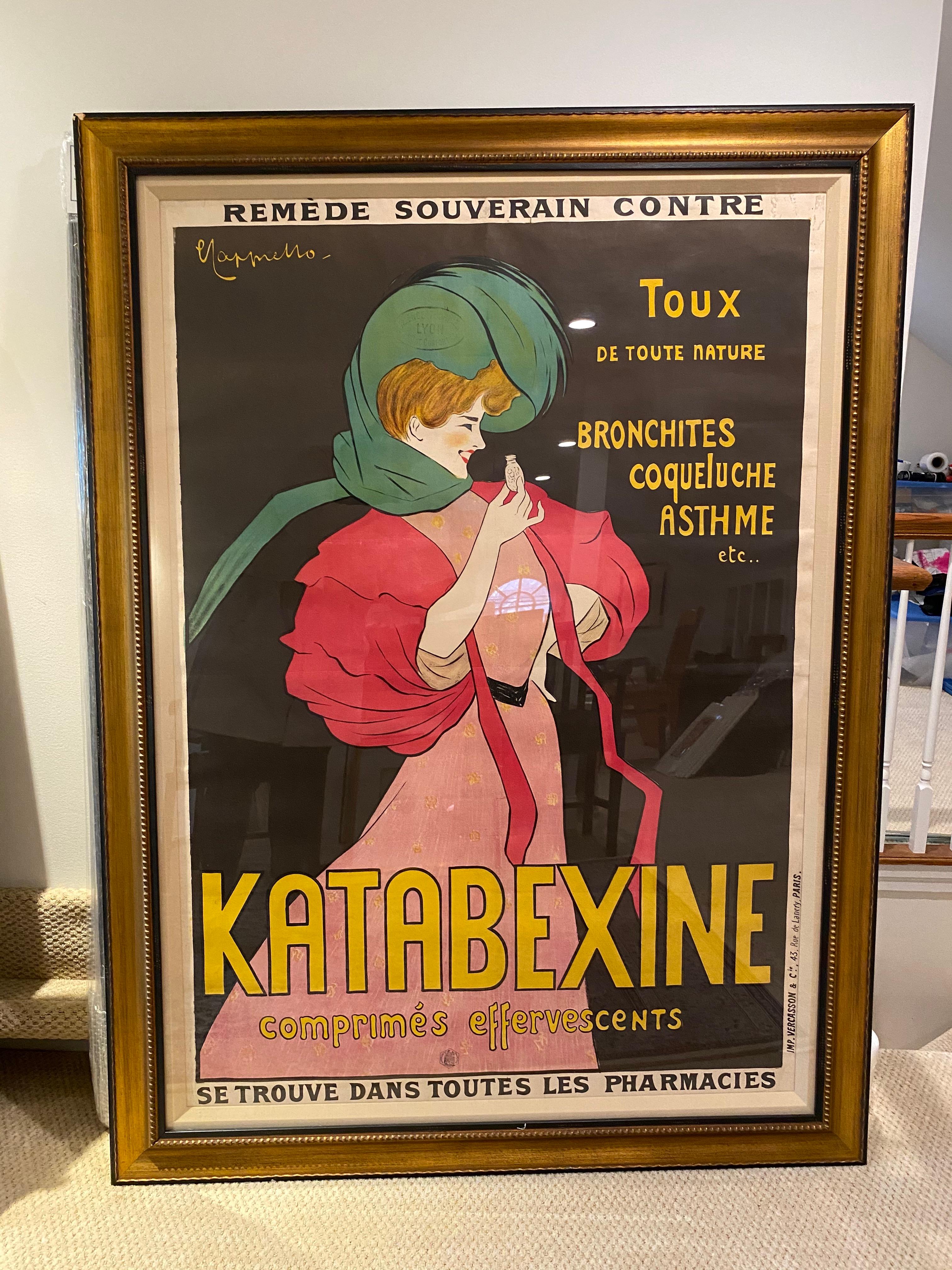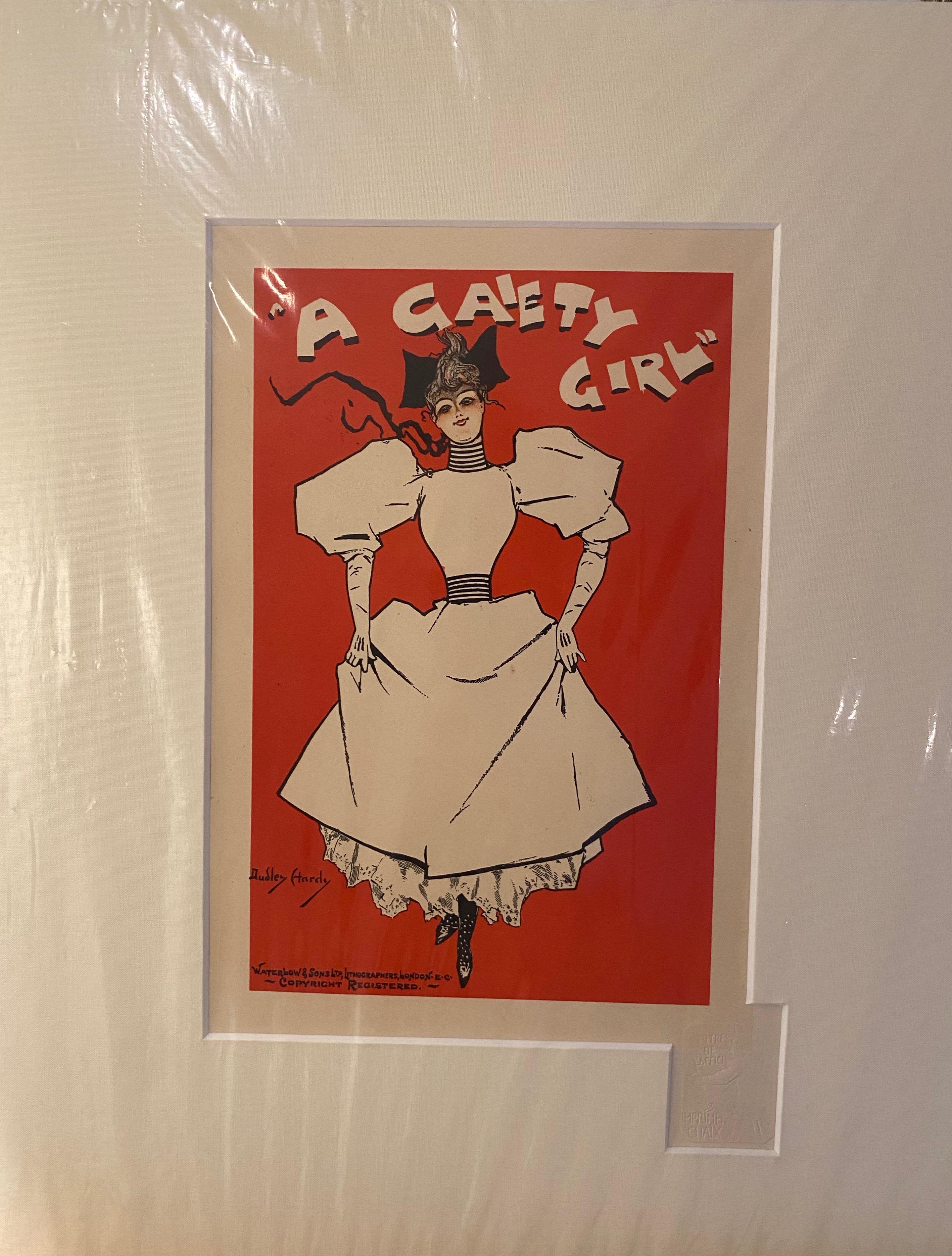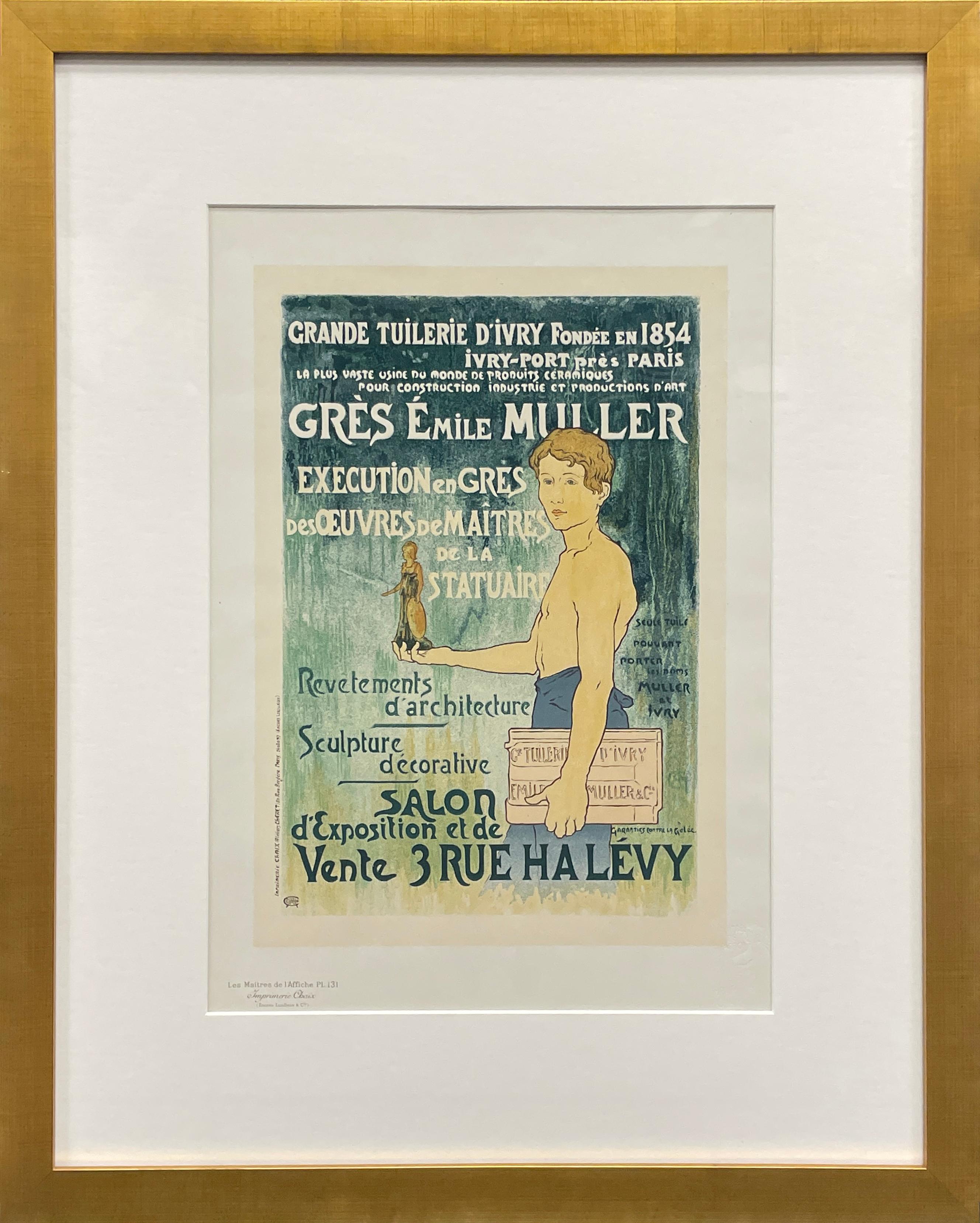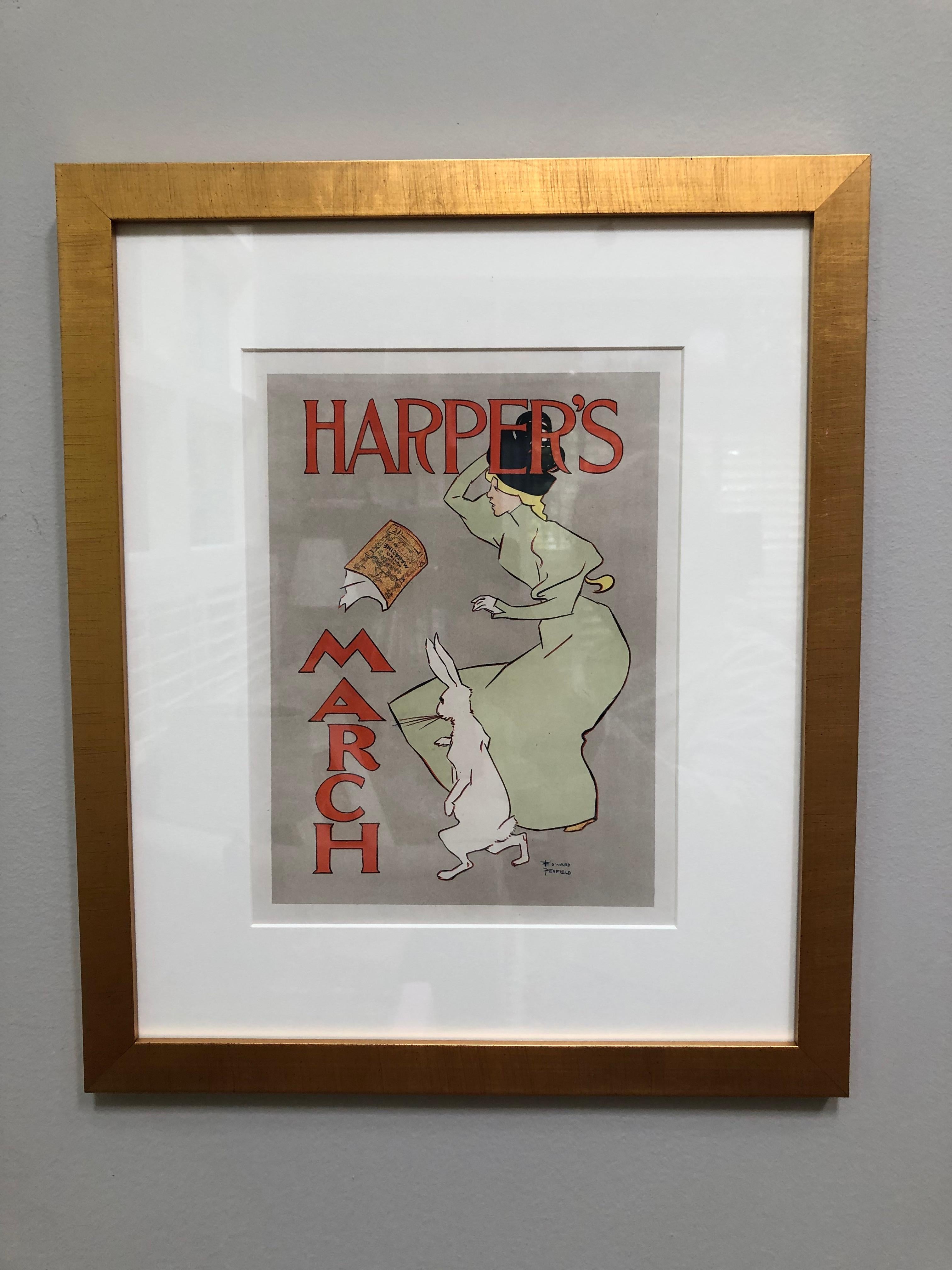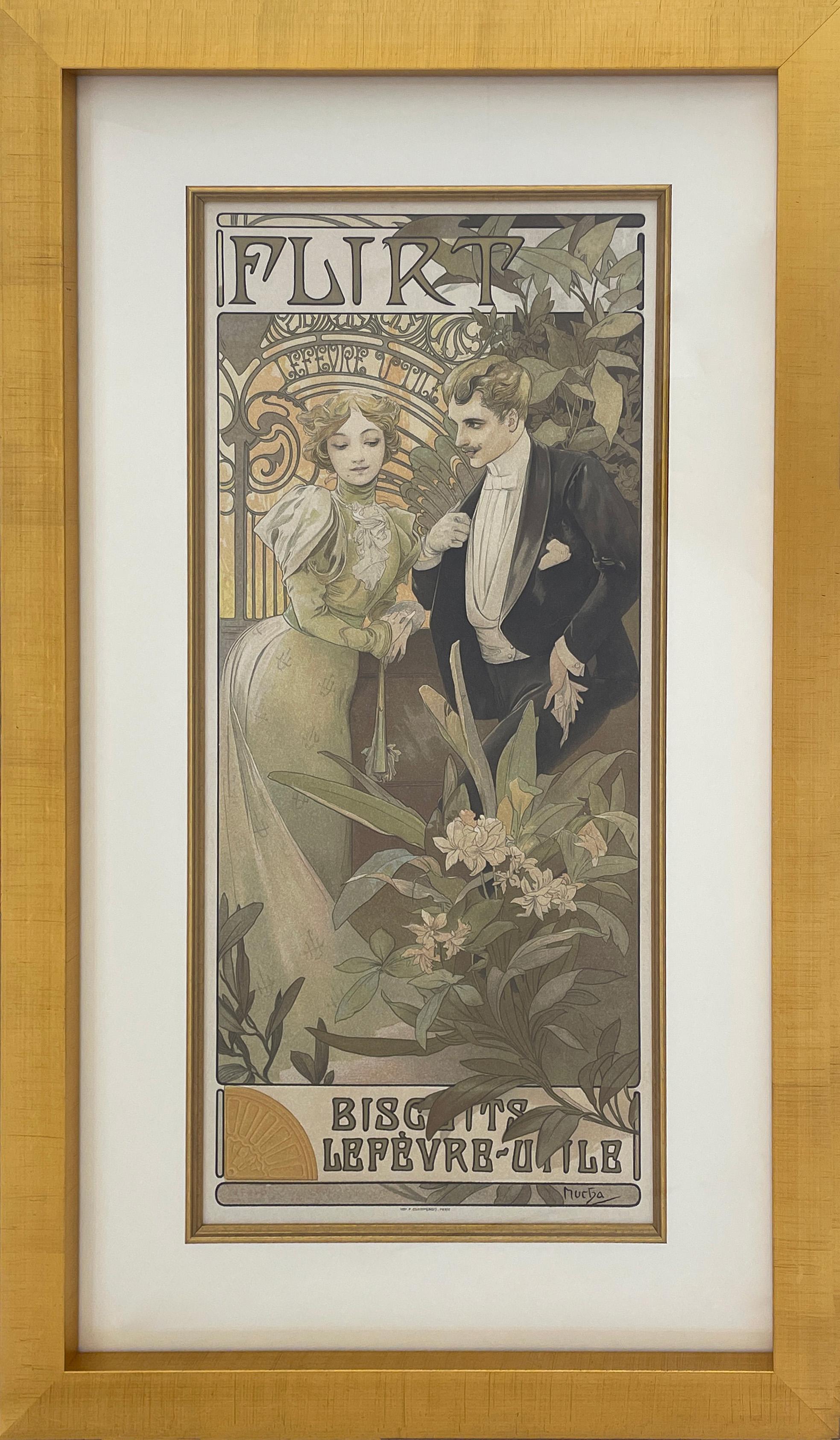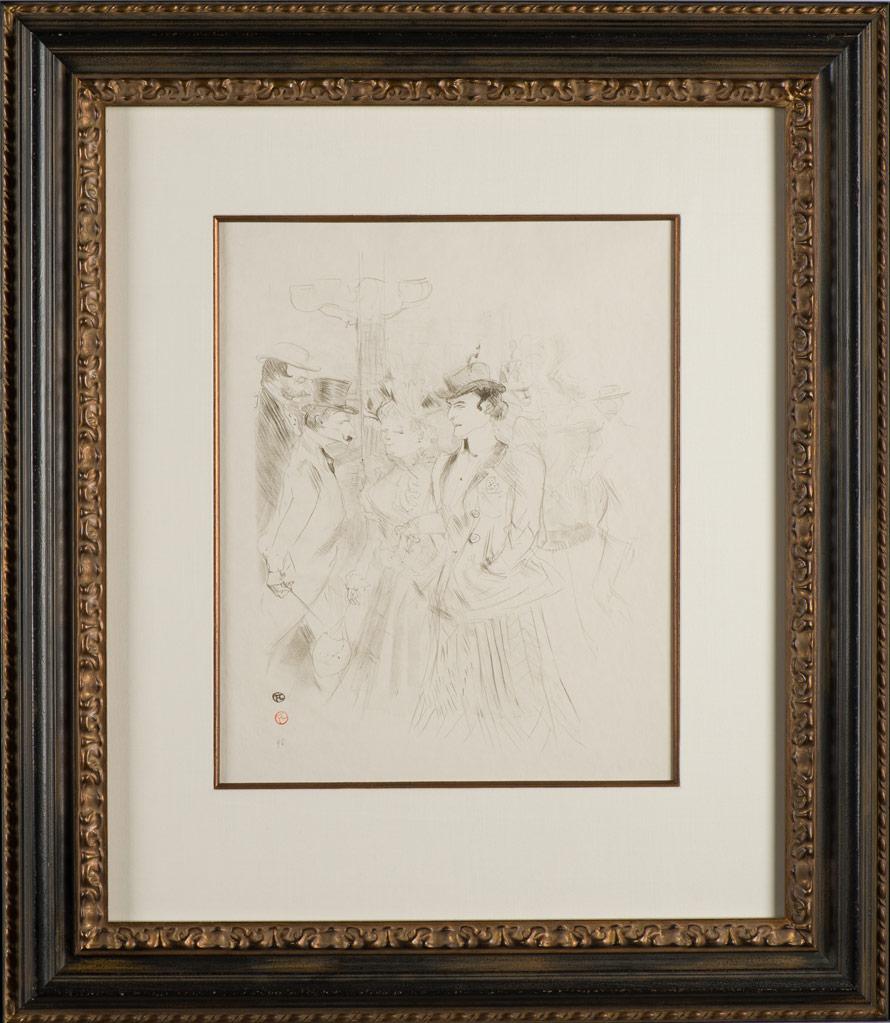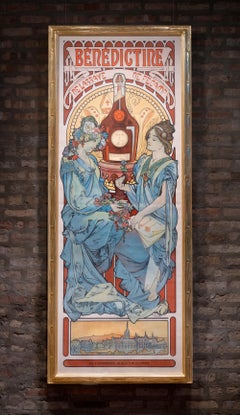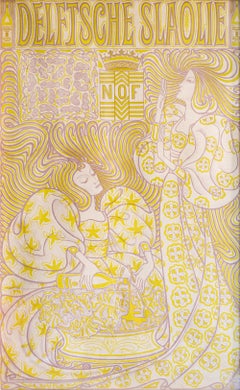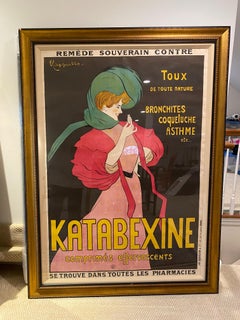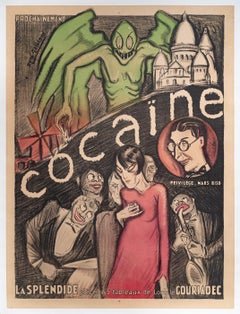
"Cocaine" Poster by René Gaillard
View Similar Items
Want more images or videos?
Request additional images or videos from the seller
1 of 8
René Gaillard"Cocaine" Poster by René Gaillardc. 1926
c. 1926
About the Item
- Creator:René Gaillard (French)
- Creation Year:c. 1926
- Dimensions:Height: 62.5 in (158.75 cm)Width: 47 in (119.38 cm)
- Medium:
- Movement & Style:
- Period:
- Condition:
- Gallery Location:Chicago, IL
- Reference Number:1stDibs: LU46738162122

About the Seller
5.0
Gold Seller
These expertly vetted sellers are highly rated and consistently exceed customer expectations.
Established in 2013
1stDibs seller since 2016
82 sales on 1stDibs
Typical response time: 2 hours
More From This SellerView All
- "Bénédictine" Original 1898 Lithograph, Alphonse MuchaBy Alphonse MuchaLocated in Chicago, ILPublished by F. Champenois, Paris. "Bénédictine shows two girls pressing flowers amid book leaves, to remind us of the herbs that go into making the liqueur; the bottom part of the poster has a panorama of the Fecamp Abbey where the drink originated. Around 1510, one of the monks, Dom Bernardo Vincelli, prepared a liqueur using local wine and native herbs found in nearby woods, together with a few imported ingredients including muscat, ginger, clove and cardamom" (Wine Spectator, 70). As with all poster this size, the lithograph was made, in color, on two panels and joined at the center. Alphonse Mucha was a painter and decorative artist best known for the sensual Art...Category
1890s Art Nouveau Figurative Prints
MaterialsLithograph
- Delftsche SlaolieBy Jan TooropLocated in Chicago, ILJan Toorop was born in Java, studied in Holland and then spent three key years in Brussels, where he was a member of the circle of artists, "Les XX," during which time he befriended ...Category
1890s Art Nouveau Figurative Prints
MaterialsLithograph
- Fromme's Kalender Art Nouveau Lithograph Poster Koloman Moser Vienna SecessionBy Koloman MoserLocated in Chicago, ILLithograph printed by Albert Berger, Vienna. This design "was considered very advanced in 1899, with its large scale portrayal of the motif and the almost complete renunciation of interior drawing. The silhouette of the body is in mysterious contrast to the realistically portrayed head and hands. The unwavering gaze of the woman underlines the symbolism of the design: the Norn [ancient Norse goddess of fate] with the hour-glass and snake-ring embodies the eternal circle of life and the running out of time" (Vienna Secession, Denscher, p. 45). As the poster was originally used in 1899, the waning sand in the hourglass quite naturally can be assumed to be the coming of the end of the century. KOLOMAN MOSER: Instead of applying his flair and art education to paintings, Koloman Moser embodied the idea of Gesamt Kunstwerk (all-embracing art work) by designing architecture, furniture, jewelry, graphics, and tapestries meant to coordinate every detail of an environment. His work transcended the imitative decorative arts of earlier eras and helped to define Modernism for generations to come. Moser achieved a remarkable balance between intellectual structure (often geometric) and hedonistic luxury. Collaborating with Gustav Klimt and Josef Hoffmann, the artist was an editor and active contributor to Ver Sacrum, (Sacred Spring), the journal of the Viennese Secession that was so prized for its aesthetics and high quality production that it was considered a work of art. The magazine featured drawings and designs in the Jugendstil (Youth Style) along with literary contributions from distinguished writers from across Europe. It quickly disseminated both the spirit and the style of the Secession. In 1903 Moser and Hoffmann founded and led the Wiener Werkstatte (Viennese Workshop) a collective of artisans that produced elegant decorative arts items, not as industrial prototypes but for the purpose of sale to the public. The plan, as idealistic then as now, was to elevate the lives of consumers by means of beautiful and useful interior surroundings. Moser’s influence has endured throughout the century. His design sensibility is evident from the mid-century modern furniture of the 1950s and ‘60s to the psychedelic rock posters...Category
1890s Art Nouveau Figurative Prints
MaterialsPaper, Lithograph
- "Princess Hyacinthe" Original 1911 Lithograph, Alphonse MuchaBy Alphonse MuchaLocated in Chicago, IL“One of Mucha’s best Czech posters, printed by the firm of V. Neubert in the Smichov quarter of Prague, was for Princezna Hyacinta, a fairy-tale ballet and pantomime with music by Oskar Nedbal and libretto by Ladislav Novák. The portrait of the popular actress Andula Sedlácková as the princess dominates the poster. The plot develops as a dream of a village blacksmith who falls asleep after digging for a buried treasure. In his dreams he becomes lord of a castle, and his daughter Hanicka becomes the Princess Hyacinth. Of her three suitors, one is a sorcerer who abducts her to his underground palace, but she is rescued by a poor knight who looks like her real-life lover. Mucha used the motif of the hyacinth throughout the entire design, from embroideries to silver jewelry, and for an elaborate circle sparkling against the mossy green background. The portrait of the actress is seen against a sky full of stars and encircled with images from the dream: the blacksmith’s tools...Category
1910s Art Nouveau Figurative Prints
MaterialsLithograph
- The JockeyBy Henri de Toulouse-LautrecLocated in Chicago, ILColor lithograph on Chine volant, 1899. Edition of aproximately 112. Printed by H. Stern, Paris. Published by Pierrefort, Paris. Reference: Wittrock; 308-2nd edition, vol. 2, pg. 6...Category
1890s Art Nouveau Figurative Prints
MaterialsLithograph
- Laderlappen - Original Lithograph Poster by Walter SchnackenbergBy Walter SchnackenbergLocated in Chicago, ILPrinted by Oscar Consee, Munich, 1922 Not much is known about this Stockholm-based cabaret act. Translating literally as Bat Man, we see a young dancer tease an oversized bat wearing a monocle -- a truly bizarre but beautiful design. (text by Jack Rennert) Walter Schnackenberg’s style changed several times during his long and successful career. Having studied in Munich, the artist traveled often to Paris where he fell under the spell of the Henri de Toulouse-Lautrec’s colorful and sensuous posters depicting theatrical and decadent subjects. Schnackenberg became a regular contributor of similar compositions to the German magazines Jugend and Simplicissimus before devoting himself to the design of stage scenery...Category
1920s Art Nouveau Figurative Prints
MaterialsLithograph
You May Also Like
- "La Vache Enragee" iconic vintage poster by Toulouse-LautrecBy Henri de Toulouse-LautrecLocated in Hinsdale, ILTOULOUSE-LAUTREC, HENRI DE (1864-1901) "LA VACHE ENRAGÉE" Wittrock P27B, Adhemar 197 Original color lithograph Wittrock’s State III of III with letters Printed on buff wove paper, c. 1896 Bears artist stamp “TL” upper right, dated 96 Image size: 22 1/2” x 23 5/8” Several examples are known where Lautrec drew on work by other artists whom he admired. In this poster there are clear references to Adolphe Willette's humorous themes and rococo style of illustration. Willette was the founder and illustrator of the short-lived monthly “La Vache Enragee”(the angry cow) edited by the cartoonist Adolphe Roedel. This colored poster of the same title was commissioned for the appearance of the magazine March 1896. As a reference to the wretched financial state of most artists, the term “manger de la vache enrage” (meaning roughly, “meaning not having enough to eat”) was adopted as the motto for the “Vachalcade”which was held on Montmarte annually from 1896. This was an artists' procession, with fanfares and allegories on fame and the muses; it also included a furious cow and a troupe of pretty girls as a satire on Europa with the bull. The event was organized by Roedel"(Adriani p.217) Toulouse-Lautrec took up lithography at a high point in its history, when technical advances in color printing and new possibilities for large scale led to a proliferation of posters as well as prints for the new bourgeois collector. In his short career, he created more than three hundred fifty prints and thirty posters, as well as lithographed theater programs...Category
1890s Art Nouveau Figurative Prints
MaterialsLithograph
- KatabexineBy Leonetto CappielloLocated in Hinsdale, ILCAPPIELLO, LEONETTO (1875 - 1942) "Katabexine" Lithograph in color, linen-backed c. 1903 Sheet size: 54.25” x 39” Cap./GP, 252; Cap/StV, 4.22; DFP-II, 118; Schardt, pp. 174-5; PAI-V...Category
Early 1900s Art Nouveau Figurative Prints
MaterialsLithograph
- "Oeuvre de l'Hospitalite de Nuit" from Les Maitres de l'AfficheBy (Attributed to) Jules CheretLocated in Hinsdale, ILCHERET, JULES (1836 -1932) "Oeuvre de l'Hospitalite de Nuit" Original lithograph from "Les Maitres de L'Affiche" series Printed by Imprimerie Chaix, Paris Bearing MDL stamp lower ri...Category
1890s Art Nouveau Figurative Prints
MaterialsLithograph
- "The Gaiety Girl" from "Les Maitres de L'Affiche" seriesBy Dudley HardyLocated in Hinsdale, ILHARDY, DUDLEY (1867 – 1922) "A Gaiety Girl" Original lithograph from “Les Maitres de L’Affiche” series Printed by Imprimerie Chaix, Paris Bearing MDL stamp lower right, from issue #...Category
1890s Art Nouveau Figurative Prints
MaterialsLithograph
- "Quest of the Golden Girl" from Les Maitres de l'AfficheBy Ethel ReedLocated in Hinsdale, ILREED, ETHEL (1874 -1926) "Quest of the Golden Girl" Original lithograph from "Les Maitres de L'Affiche" series Printed by Imprimerie Chaix, Paris Bea...Category
1890s Art Nouveau Figurative Prints
MaterialsLithograph
- "The New Woman" from Les Maitres de l'Affiche by MorrowLocated in Hinsdale, ILMORROW, ALBERT GEORGE (1863 -1927) "The New Woman" Original lithograph from "Les Maitres de L'Affiche" series Printed by Imprimerie Chaix, Paris Bearing MDL stamp lower right, c. 1897. Plate #79 Unframed Size: 11 3/8 x 15 3/4 ”The "Les Maitres de l'Affiche" series was offered as a subscription series to collectors every month for 60 months, from December 1895 through November 1900. The "Maitres de l'Affiche," were issued as separate numbered sheets, referred to as "plates". They were numbered, with the printers name "Imprimerie Chaix," in the margin at the bottom left hand corner, "PL.1" to "PL.240." In the margin at the bottom right hand corner of each, is a blind embossed stamp from a design of Cheret's. The smaller format and the fact the "Maitres" were a paid subscription series, allowed Imprimerie Chaix to use the latest state of the art printing techniques, not normally used in the large format posters...Category
1890s Art Nouveau Figurative Prints
MaterialsLithograph
Recently Viewed
View AllMore Ways To Browse
1920s Film Poster
Moulin Rouge Poster
A Man And A Woman Film Poster
Les Baker
Le Moulin Rouge
Paris Le Moulin Rouge
Josephine Baker Poster
Rouge Coeur
B Is For Baker
French Alcohol Posters
Le Sacre Coeur
Tony Hill
French Poster Art Alcohol
Windmill Poster
Sacre Coeur De Montmartre
Roaring 20s Dresses
Rene Gaillard
Face With Dove
